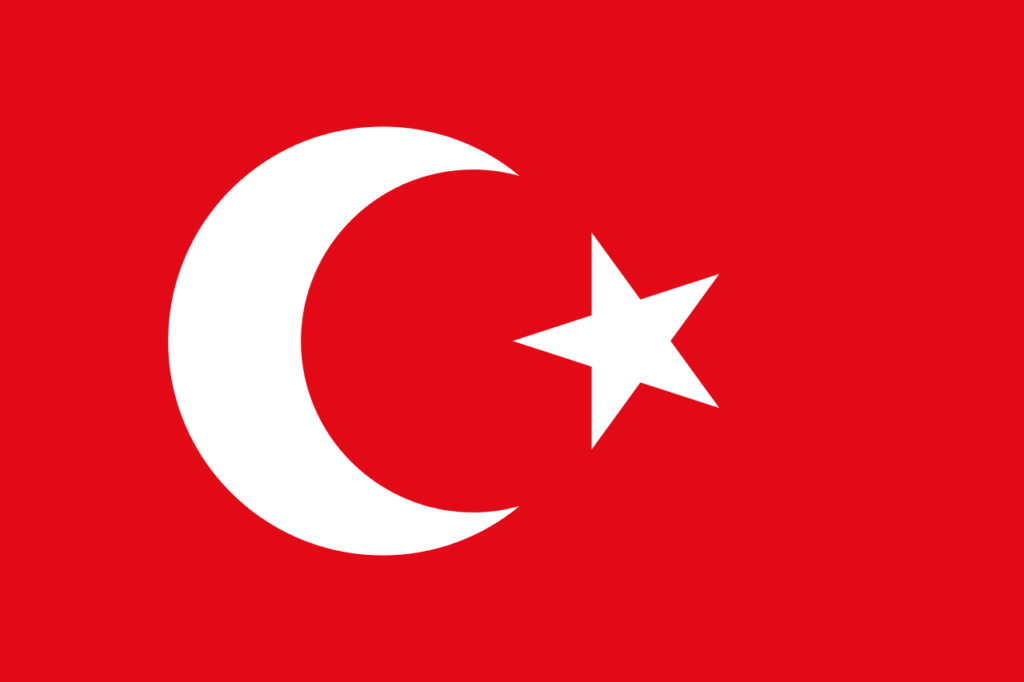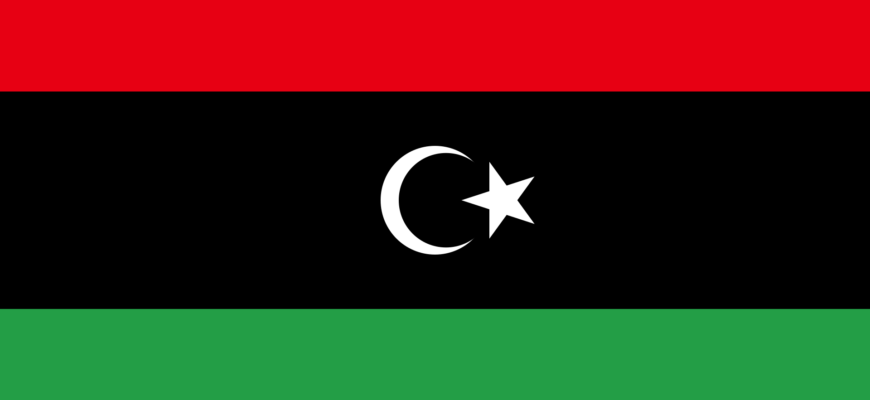The state of Libya is the easternmost country of Africa in relation to Egypt. Over the centuries of its existence, it has changed several symbols.
History of the flag
It was officially approved in 1951, was used until Muammar Gaddafi came to power and reappeared after his death.
Muammar Gaddafi was a revolutionary, military and political figure who overthrew the monarchy and took power in Libya in 1969. He was assassinated in a coup in 2011.
The first known flag of Libya is the flag of the Ottoman Empire — a white star and crescent on a red background.

Libya was under Ottoman rule from 1511 to 1911.
At the same time, the coastal region of the country had its own name — the Kingdom of Tripoli — and its own symbol, green with three white crescents. This territorial unit also existed until 1911. It became a Republic in 1918, its flag a blue cloth with the image of a green palm tree and a white star above it. But five years later, Tripolitania ceased to exist.

After the Italians conquered the territories of the state during the war with the Turks, it (along with two other colonies) became known as the Italian North Africa, and a modified Italian flag was used as a symbol. It depicted the coat of arms in the form of a white cross on a red one.

During World War II, Italy lost power over its colonies, then regained it, but in the end the dominance was in the hands of Great Britain, and its banner was used.

England owned the colony from 1943 to 1951.
After the withdrawal of the British from Libyan territory, it was divided into three regions, Thetsan, Cyrenaica and Tripoli. The flags of the first two regions were almost identical, similar to the Ottoman flag, with the only difference being that the Cyrenaica flag duplicated the Turkish flag, having not a red but a black background, and the star on the red flag of Fezzian was applied only in outline.
Libya gained independence in 1951, obtaining the status of a united kingdom. The flags were also united, and it was at that time that the modern form of the flag appeared.

After the revolution in 1969, the Pan-Arab tricolor of red, white and black was used.

In 1972, a golden eagle with a scroll was added to the flag of Libya.

Pan-Arab colors were used by the countries of the Arab Revolt, the liberation movement of 1916-1918.
Gaddafi founded the Great Socialist People’s Libyan Arab Jamahiriya, which was given a single-color symbol of green.

After the revolutionary’s passing, the country returned to the flag of the Kingdom.
Description
There are three stripes, the middle — twice as wide as the outer, it also depicts the crescent moon with a star.
Flag colors
Red, black, green, white.
Meaning of colors and flag symbol
- Red — Fezzian.
- Green — Tripolitania.
- Black — Cyrenaica.
- Crescent and star — Islam.
In a different interpretation, red is the fight for independence, the bravery and dedication of the warriors, green is the color of Islam, black is the tribute of Cyrenaica, the main part of the state.
Other Flags
Other Libyan flags had their own symbol until 2011 — a blue cloth with a white anchor on the right and the Jamarha flag in the upper left corner, at the stem.

Power in Libya has changed many times, changing regimes and rulers, but after the overthrow of the Gaddafi regime, it was decided to return to its historical origins — the symbol that represented independence and freedom.
General information about Libya
| Official language | Arabic |
| Capital | Tripoli |
| Territory | 1 759 541 km² |
| Population | 7 200 000 people |
| Currency | Libyan dinar (LYD, code 434) |
| Phone Code | +218 |










As a guy who loves history, spotting Libya’s flag always gets me hyped! It’s super cool how one flag tells a big story about a country’s journey and spirit. Makes me wanna dive into more flag facts and see what other countries’ colors mean. Fascinating stuff!
As a history buff, I was thrilled to learn about Libya’s flag changes! When I traveled there, I saw the green flag everywhere, totally vibrant and unique. It’s amazing how flags tell stories about a country’s past and hopes. Libya’s flag definitely stands out in the best way!
As a history buff, I was blown away when I learned about Libya’s flag changes. Traveling there last year, locals shared how the flag symbolizes freedom and resilience. It’s wild to see how much a simple design can tell a country’s story, making me appreciate flags way more now!
As a guy who loves history, I once found an old Libyan flag at a flea market. It sparked a cool convo about Libya’s past and culture. Flags really connect us to stories and people. This article brought back that vibe perfectly!